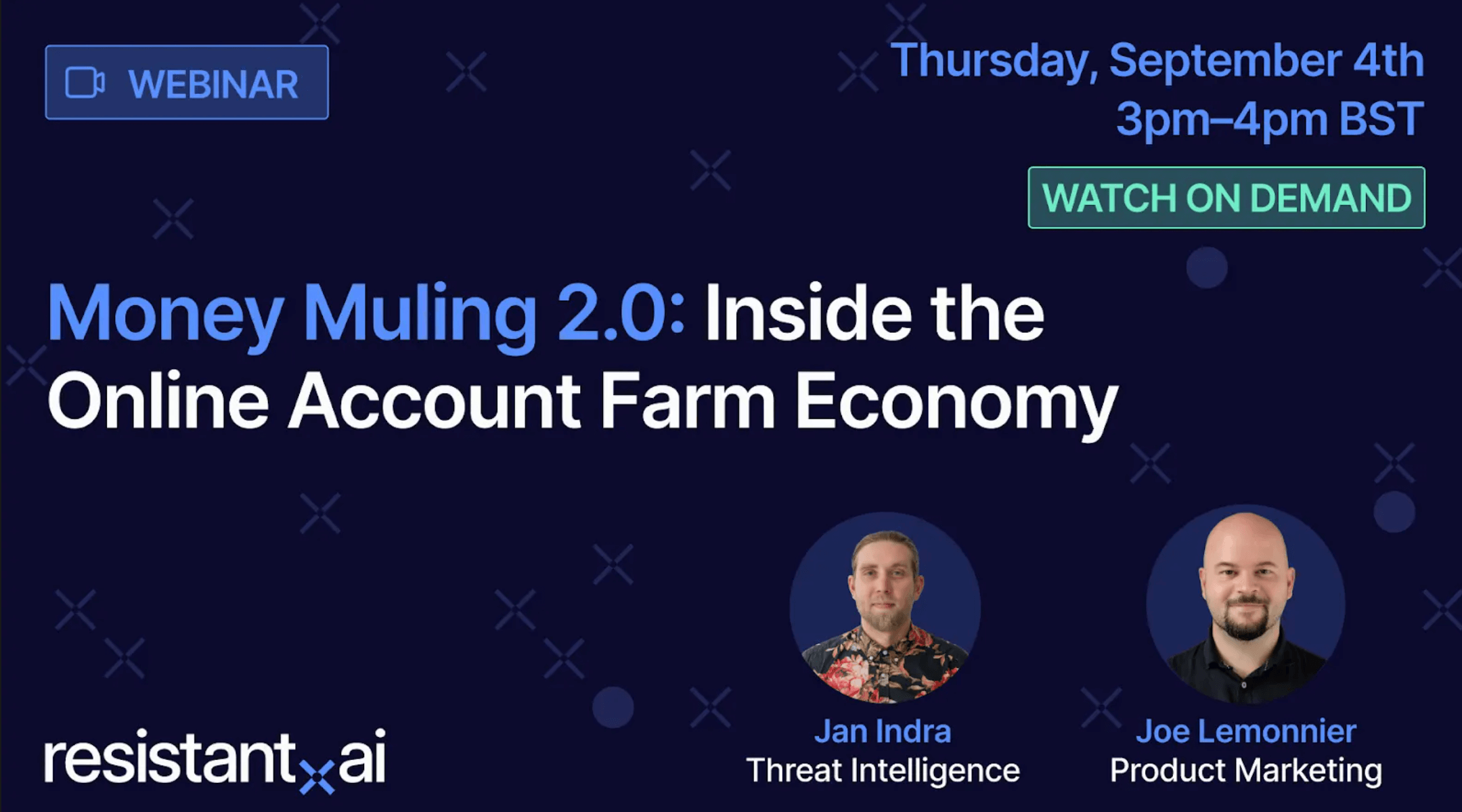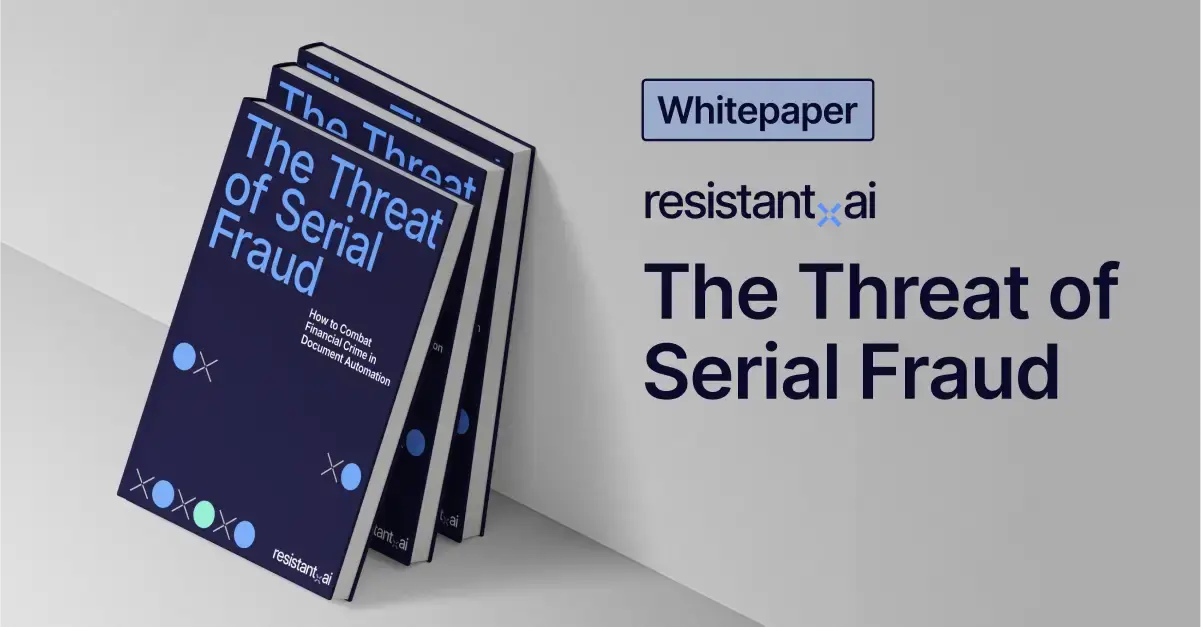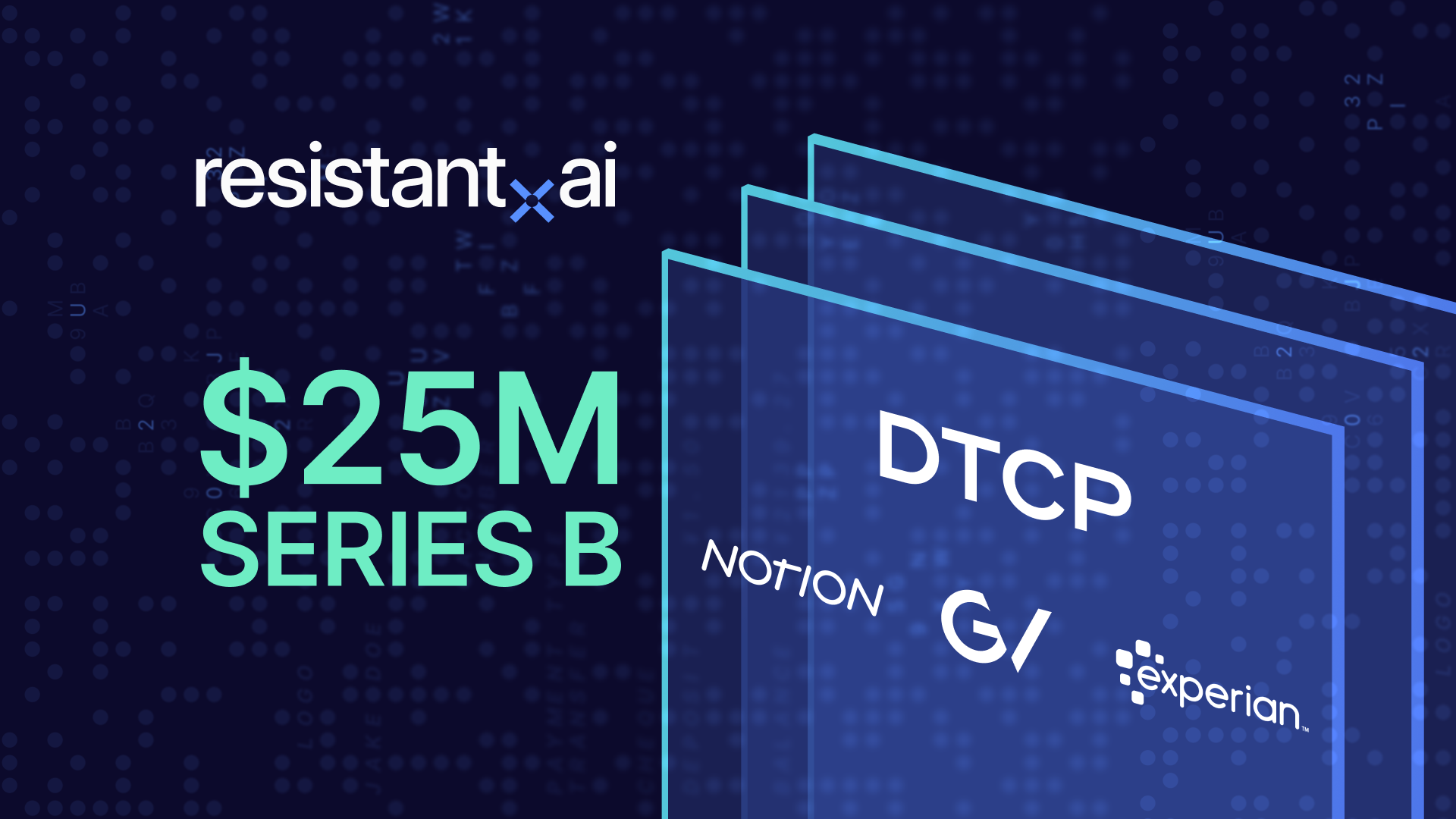Revolutionizing pre-employment screening: The power of AI in document fraud detection



Employees are the backbone of any business, but they can also be a double-edged sword when it comes to occupational fraud.
For companies across the globe, most firms lose 5% of their revenue to fraud–which amounts to a staggering cost of $4.7 trillion, annually.
As corporations grow in numbers, hiring the right people becomes pivotal for financial success. On the other hand, many fail to realize that recruiting the wrong ones can come at a hefty price.
From embezzlement to on-the-job violence and low performance, poor hiring methods can introduce a slew of issues that lead to a drop in the efficiency and effectiveness of work produced, which in turn, causes a significant dip in profit.
Since most financial crimes start from within, it becomes essential to safeguard existing assets at the very beginning.
One of the best ways is through employment screening.
Summary
What is pre-employment screening?
Pre-employment background checks refer to the process of reviewing potential job candidates to determine if they are apt for the role. These checks involve several aspects such as assessing the applicant’s skillset, sensitivity to confidential information, and suitability to the tasks within the specified scope.
Moreoften, per hire background checks act as the first deterrent against occupational fraud, which is incredibly useful since 90% of costly employee theft cases come from the workforce. Known as a precautionary measure in most HR recruitment practices, this procedure allows enterprises to understand potential workers on a deeper level before making a decision.
Why is employee fraud on the rise?
Occupational fraud is the most expensive liability for any business owner.
With a sharp increase of 74% between 2022 and 2023, employee theft is fast becoming one of the most common forms of financial crime in the world. For corporations across the globe, this spells trouble.
Based on the notable theory of the fraud triangle concept by UCLA, there are three main factors for committing crimes.
Pressure
Similar to the universal law of cause and effect, pressure is one of the driving forces of occupational fraud. The issue is understanding where it comes from. Contrary to popular belief, economic pressure is not the only reason. Moreover, due to the complexity of human behaviors, understanding the causes of occupational fraud can be tricky.
Here are some of the main pressures:
Economic: With over 42% of the workforce living beyond their means, many might inevitably be knee-deep in debt and looking for an easy way out. Apart from a lavish lifestyle, some workers could be prone to a plethora of issues such as gambling, exorbitant medical bills, excessive shopping etc. It is important to note that insufficient wages from employers can also be a cause of employee theft.
Social: Despite witnessing wrongdoings in the company, 35.5% of entry-level employees chose to turn a blind eye. From bullying to on-the-job violence, the reasons for occupational fraud are endless. In a workplace that lacks ethics, copycat behavior is expected as employees try to fit into a higher social group through similar actions. As the saying goes, ‘monkey see, monkey do,’ which is a rising cause for concern as demotivated and dangerous employees tend to influence others to do the same.
Opportunity
Organizations function best when employees can be trusted. Unfortunately, trust can be broken due to temptations.
These opportunities come in all shapes, sizes and forms. Depending on the company, the siren song changes from one to the other. One of the most common forms of occupational fraud is time theft, caused by weak surveillance in remote settings.
However, nearly 50% of occupational fraud cases are attributed to weak internal controls and overridden external controls. Some of these poor protocols can include poorly delegated work, lack of security and supervision on financial transactions, and even easy access to petty cash or inventory.
The opportunities are double when employees begin misleading employers long before their applications are approved. For example: Many use online tools like a resume builder to fabricate or exaggerate their qualifications.
Rationalization
Human nature is complex when it comes to the vast range of emotions involved. For occupational fraud, rationalization occurs when workers justify the means for committing financial crimes. The thought process usually chronicles around downplaying the severity of fraudulent actions by blaming the corporation, believing the firm should be defrauded or thinking that the monetary loss is temporary since it will be repaid.
At a median loss of $177K per fraudulent case, all it takes is for a worker to overcome feelings of guilt and remorse to continue his or her defrauding activities. From employee dissatisfaction to inadequate salaries, the reasons vary from person to person. For offices with a poor ethical culture, it can be a major factor in encouraging employees to go down the path of occupational fraud.
Therefore, conducting tenant credit and background checks with the right software becomes a rising necessity for both landlords and property managers to protect their assets.
What kind of fraud does background verification prevent?
An effective pre employment screening process goes a long way in safeguarding the assets of a business. Recognized as an insightful tool for identifying red flags early on in the recruitment process, it acts as a wake-up call for business owners to weed out candidates using fraudulent methods for gainful employment.
As the saying goes, “prevention is better than cure.”
With 39% of the workforce concealing theft through creating fraudulent physical documents, employees are becoming bold and creative in their pursuit to commit financial wrongdoing. Hence, it is vital for companies to utilize employment background screening as a tool to assess, analyze, and hire the right people for the firm.
From assessing credit checks to an employment history check, the ways to verify candidates vary. However, the purpose of conducting a pre employment reference check remains the same. By using real-time data provided, this helps employers gain insight into the ethical standards, conduct, and behaviors of a potential worker to prevent:
Asset misappropriation
Asset misappropriation is known as the misuse or theft of corporate resources by existing employees. Making up 86% of all occupational fraud cases, it is the most common yet the least expensive liability for business owners. Not limited to cash, the assets in question can include physical inventory, reimbursements, and even working only with preferred vendors due to bribery. The main categories of asset misappropriation include:
-
Defrauding disbursements: Commonly known as schemes, it is categorized into a revenue cycle that includes payroll fraud like timesheet theft and ghost employees etc as well as the expenditure cycle that includes unauthorized expense claims, overbilling, fake invoices etc.
-
Embezzlement: This happens when transactions are not supervised and employees siphon the organization’s funds or checks at their discretion for personal gains.
-
Theft of Resources: Stealing is one of the most rampant activities in the workplace. It usually involves tangible products such as stealing larger equipment or small-time pilfering of the firm’s inventory, which can sometimes be resold for personal profit.
-
Misuse of existing assets: When organizations offer facilities and vehicles as a bonus, employees can take advantage by misusing it. Some examples include taking the company’s vehicle for personal trips, siphoning office supplies, and using the firm’s equipment for personal side hustles.
Corruption
Corruption is the abuse of power by influencing decisions through extortion, bribery, and conflicts of interest within an enterprise. Found in 50% of all asset misappropriation cases, bribery can happen in any setting, place, or time, no matter the size of the company. Depending on the situation, a supplier, competitor, or civil servant can influence the outcome by providing benefits that create bias in the chosen choice. Here are the different types of corruption:
-
Improper Gratuity: Unlike bribery, gratuity comes in non-monetary forms such as pricey holidays, concert tickets, and even spa sessions. This frequently happens in procurement fraud, also mostly known as vendor fraud–where employees intentionally select their preferred suppliers regardless of price or quality to continue receiving kickbacks.
-
Bribery: This form of corruption is where employees get monetary benefits to make a biased decision. It is frequently used to secure government contracts or contractual benefits between companies.
-
Conflicts of interests: When employees make a decision, it should be in the best interests of the company. Once any worker decides corporate outcomes for personal gain, a conflict of interest happens due to presumed bias on the employee’s part.
Financial statement fraud
Despite being the least common type of occupational fraud, it is the most expensive case for enterprises worldwide. With a median loss of over $593K, financial statement fraud only makes up for 9% of all fraudulent activities. As the name suggests, it is a misrepresentation of the organization’s financial status through purposeful manipulation with ill intent. The varied forms include:
-
Manipulated balance sheet: Similar to exaggerated revenue, dishonest workers tend to inflate assets while understating and misclassifying expenses or liabilities to enhance the financial ratios of the company’s existing status.
-
Inflated Income: This fraudulent activity works by intentionally inflating incoming revenue from fake transactions, incomplete orders, and excessive allowances from bad debtors to position the firm in a better light.
-
Omitted Disclosure: In some cases, employees tend to mask or cover up aspects of a balance sheet or crucial information to present the corporation with a healthy financial balance to sway senior decision-making.
Bad behavior
Apart from preventing potential occupational fraud, pre-employment screening checks play a major role in identifying problematic workers. Losing over $450B of engagement costs annually, the main reason for disengaged workers is largely attributed to poor behaviors within the corporation. Some of these bad behaviors include:
-
Workplace violence: On-the-job violence refers to employees causing bodily harm to another within the workplace. The reasons vary but candidates with prior convictions or a history of anger management issues are prone to partaking in workplace violence.
-
Absenteeism: This happens when workers often take days off with no medical or valid reasons. It contributes to low morale and engagement in the workplace which tends to decrease the overall productivity and profitability of a company.
-
Poor performance: A lack of productivity within the workforce comes in many ways. From not performing up to standard or using office hours to finish other personal tasks, the list is endless even though it greatly reduces the efficacy of an organization’s operations.
-
Lack of ethics: Not easily detected, an individual’s lack of ethics is a driving force in occupational fraud. However, employees can display these red flags by cutting corners at work, flouting rules and regulations, and rationalizing unethical behaviors that do not benefit the corporation.
What do employment screening services check for?
As a business, it is not only essential to understand your customers but also your potential employees. The best way to begin is by enforcing a stringent pre-employment screening process in every recruitment practice. With over 64% of candidates admitting to lying on their resume at least once, there is no guarantee that it will not happen again. Therefore, to keep employment fraud at bay, companies need to be aware of the different ways an applicant can defraud them.
Here are some of the typical types of employment fraud:
Falsified income statements
For certain high level executives and industries, falsified income statements are common to hide escalating debt, vices (gambling addictions etc) and issues that might affect the company’s reputation. In some rarer cases, workers also gain a bargaining chip in salaries by reporting a higher income during the recruitment process. Some can take the form of altering salaries on bank statements or falsifying the entire document altogether–also commonly known as document fraud. Unfortunately, potential workers tend to abuse this step by falsifying income statements to get an edge in the recruitment process.
Academic falsification
When an applicant submits an altered academic document or a fake educational certification, that classifies as academic falsification. It frequently occurs when candidates are not academically qualified yet continue applying for jobs that are out of their league. It can take the form of a completely non-genuine document or an altered academic document, the best way to discern its authenticity is usually through using an AI-powered solution.
Inaccurate information
Potential applicants lie on their resumes in multiple ways such as inflated performance metrics (sales figures, performance metrics, cost savings etc) and technical skills (MS Excel, Agile, Java, etc) to stand out among the competition to be selected during the hiring process. In addition, candidates can add in job descriptions that do not reflect their prior experience in order to portray inflated work experiences.
Impersonation
Conventionally recognized as identity fraud, impersonation takes place when potential candidates assume the identity of another for improper purposes. This usually happens when the worker submits fraudulent identification documents such as social security numbers, passports, tax documents, driver’s licenses, and even falsified drug tests that do not belong to the said employee.
As technology advances, the number of ways potential employees can defraud organizations increases. Due to unforeseen circumstances, employers need to conduct their due diligence during the recruitment process. Not just to hire the best candidate, but also the right person to drive recurring revenue with the same vision.
How to detect document fraud during background checks?
On average, an estimated 107 million working Americans admitted to lying on their resumes at least once to get their desired career. As an employer, detecting document fraud doesn’t just begin with the resume, it includes a variety of other documents such as credit checks and criminal background checks.
Given the widespread deception growing among job applicants, it is becoming increasingly difficult for employers to recruit the right person for the job. Hence, it is crucial to recognize the ways fraudulent activities turn up in a pre-check background screening.
The pre employment background screening process is merely the first step of due diligence.
In this section, discover simple tips in areas to look out for during pre-employment screening.
Criminal background checks
A comprehensive criminal background check during a pre-employment screening makes all the difference in a good recruitment practice. With 1 in 3 Americans possessing a criminal record, it is paramount that recruiters and companies learn how to use data to detect risky employees.
Like how law enforcement officials identify flight risks, employers can do the same too.
The main tip is to pay extra attention to prior history of theft, fraud, and workplace violence-related history during a criminal background check. Unlike pre-employment vetting, this precautionary measure warns corporations of potential alarm bells before they set off. Another way corporations can vet better is by including a civil and bankruptcy pre-hire background check. With over 433K bankruptcy claims filed in 2023 alone, financial pressure is becoming increasingly prevalent across the globe.
Once an employee screening background check shows that an applicant has a questionable past, the chance of a future liability amplifies. This can range from workers who have filed for bankruptcy to those with pending civil cases that highlight additional financial pressure they might have – which makes them prone to committing fraud. Hence, employers need to utilize criminal, civil, and bankruptcy background checks to make better decisions with real-life data.
Reference checks
A reference check plays a major part in an employment screening background check. It is a critical process where previous employers are verified and information about current applicants are extracted. Depending on the organization, a reference check can be done in a myriad of ways.
The most common one is via a phone call, which makes it an easier target for fraudulent references as there is no way of confirming if the other person on the line is a reputable reference. Occasionally, some workers might use reference letters which are even easier to forge.
Therefore, it is much safer and more secure to use AI-automated solutions to detect fraudulent official documents. For non-official documents, simply checking the document history will highlight prior changes–but it is important to note that this is not a foolproof way to detect document forgery. One of the best ways is to automate the process with relevant questions that help shed light on the candidate’s character and ability to excel.
A good tip would be asking open-ended questions that would aid tremendously in preventing or uncovering fraudulent applications:
- What are some of their advantages and disadvantages?
- What were the actions that had an impact on job performance?
- Why did the applicant leave their prior position?
With 52% of employees embellishing their job responsibilities, leaving pre-employment verification and reference checks at the end of the hiring process is no longer feasible. Companies need to shift previous employment background checks to the start of the recruitment procedure, because it is an archaic practice that wastes a lot of time, money, and energy.
Credit checks
A pre-employment credit check is a major component of the employment screening process. As 4 in 10 Americans struggle to pay their usual bills, having a good credit report helps organizations hire the right person as it provides a deeper insight into an applicant’s financial history and habits.
Corporations need to conduct a deep dive into potential workers applying for roles that have access to the firm’s funds or possess fiduciary job scopes. When identifying risky employees, the key lies in uncovering financial distress from the pre-employment credit check. Here are some of the main aspects to keep a lookout for:
-
Payment history: The first is to find chronically late payments that are consistent. Applicants that have a habit of paying bills late usually indicate a lack of financial stability and personal responsibility which indicates poor behaviors that might surface in the job.
-
Credit use: Pay close attention to how a potential worker utilizes their credit. This is a telltale sign of financial distress as employees with excessive or high credit usage signify that they are over-exerting themselves financially.
-
Debts owed: Apart from educational or mortgage loans, employers need to keep a close eye on any additional loans an applicant has. Outstanding balances that are excessive usually indicate an applicant’s inability to manage debt, poor spending habits, and high inclination to employee theft or fraud.
-
Credit enquiries: An extra tip for organizations is to discover recent credit inquiries to understand the potential worker’s financial status. Applications that point towards new credit accounts and loans will highlight the urgency for financial relief and often make these employees prone to theft and fraud.
-
Analyze public records: Any form of bankruptcy, civil cases, or liens will appear in public records. Firms must utilize available resources to fully assess an applicant’s prior background before hiring.
Lastly, credit checks can be falsified. From using identity fraud to committing bank statement fraud, these activities are notorious in employment screening. To keep such issues at bay, identifying discrepancies in the document should take place once a credit report is received. However, one in five digital financial documents show signs of fraud that are invisible to the naked eye. Therefore, organizations need to switch over to AI-driven solutions for high accuracy, quality, and efficiency.
Education and identity verifications
Academic qualifications are usually the first barrier for any job applicant. When their educational levels are not aligned with the firm’s requirements, an immediate rejection is almost guaranteed.
This is where people start getting creative: 64.2% of employees lie about academic qualifications to get a career that is out of their league.
During a pre-employment background verification, unqualified candidates tend to defraud companies by submitting falsified academic certifications. Commonly known as diploma mill fraud, it comes in 3 simple categories–false educational degrees, fictitious institutions, and fake academic achievements. Bolder applicants take a step further by assuming the identity of someone else altogether. To combat this, employers need to incorporate these 4 steps:
-
Verify credentials: Go straight to the source (educational institutions, schools etc) via email, calls, or even pre-employment screening companies to verify if a student did a stint in the stipulated time.
-
Ask for more: Take charge and request additional transcripts to ensure that the potential worker did study in the school aforementioned. A good tip would be to cross-check all documents to ensure there are no alterations and discrepancies.
-
Check accreditations: Conduct due diligence to verify the academic and accreditation standards of the school mentioned.
-
Go digital: Save time, effort, and energy by engaging in online pre-employment screening services like AI-driven document fraud detection solutions to catch fraud that cannot be discovered by the human eye.
While fraudsters improve their defrauding techniques with the advancements of technology, it becomes increasingly important for employers to keep up. One of the best ways to start is by outsourcing part of the recruitment process. This helps to minimize mistakes during hiring procedures as it could be a costly consequence in the future.
Drug screening
A drug-testing session is a wise step for corporations to understand. Nearly 21M Americans have an addiction across the nation, and from medical to leisurely reasons, the causes vary from one to the other.
As an organization, it is natural to be critical of addiction issues as these applicants can be prone to workplace violence, lack of productivity, or simply a lack of morale within the firm. Hence, corporations need to incorporate drug-testing, background, and reference checks to identify substance abuse beforehand.
What are the consequences of employment fraud?
Companies stand to lose over $25,000 on average for a bad hire. Not limited to monetary loss, employee fraud also causes a chain of consequences that can be difficult for firms to recover from. Unfortunately, some of these effects can be lasting and damaging to the corporation’s brand and image. The common repercussions of employment fraud are:
-
Tarnished reputation: Internal and external stakeholders lose trust when employees engage in fraudulent activities. This leads to negative publicity associated with the brand as clients and investors lose confidence in the firm’s integrity. Moreover, affected organizations tend to struggle to secure loans from investors due to their perceived risky status.
-
Legal ramifications: Once employees commit fraud, a full investigation becomes mandatory. From legal costs to fees for repairing the company’s reputation, the list goes on. In addition, businesses could be financially impacted and singled out for compliance issues.
-
Loss of income: Monetary loss directly related to employee fraud includes theft, fake expenditure, and bribery or corruption. To top it off, organizations also lose income due to a myriad of reasons including poor performance, high employee turnover, and employee absenteeism which cost global corporations $225.8B, every single year.
-
Workplace violence: At a staggering cost of $130M, up to 2 million employees fall victim to on-the-job violence annually. These statistics highlight the value of a secure and stable workplace for any company. Without workplace safety, the firm’s profitability dips while existing employees struggle to work without fear.
-
Lack of trust and morale: Employee fraud can result in a loss of trust and morale among existing workers and investors. When workplace violence occurs, employees lose the morale to work since the environment is no longer safe. Likewise, a bad reputation leads workers to lose trust in the company’s viability. On the other hand, investors lose both trust and morale as the onslaught of issues highlights a loss of income and increased risk for the corporation.
The consequences of employee fraud cause long-lasting damages that make it tough for corporations to recoup their losses. To hire the right candidates, companies have to incorporate stringent standards to identify early red flags. Therefore, the best way to begin is by using these tips early in the pre-employment check-up procedures.
How to improve employee screening?
In the world of talent scarcity where 4 in 5 firms report difficulty filling up positions, incorporating a good employment check-up can be a challenge. The most effective way to start is by streamlining the recruitment process. Not just focusing on the candidates, a good method is to always leave the nitty-gritty details to the professionals. For a foolproof solution, advancing with technology is often the best way to begin. Based on the organization’s requirements, here are the top three strategies companies need to utilize for their hiring practices:
Use AI during pre-employment checks
The general gist and purpose of using AI solutions for all companies is to drive efficiency and effectiveness in all hiring practices, including employment history checks. Regardless of the size and requirements of the company, this common ground remains unmoved. However, AI is a double-edged sword. When done right, AI can optimize the recruitment process, yet, it can also cripple the existing system when things go sideways.
Here are some ways how AI can improve the pre-employment screening process:
Source candidates
To maximize hiring efficiency, companies can use AI technologies to source for suitable candidates across multiple job boards and industries. This can help HR executives to save a lot of time just by using algorithms and machine learning to throng job boards to find candidates. In addition, AI can also be used to assess the personality traits, skills and culture fit of each candidate to help companies understand every applicant’s strengths and weaknesses via an engaging method. In return, it makes the hiring process much more efficient and effective with little effort.
Automate candidate selection
Widely known as an ATS system, AI technologies such as NLP and machine learning primarily works by selecting the best suited candidate for the role. The system works by scanning resumes for specific keywords to determine each applicant’s skillset while comparing with prior hiring habits. This helps to reduce the time and workload taken by recruiters to select the best candidates. However, it is important to note that initial criteria set by hiring managers should be devoid of bias to prevent poor hiring decisions that are not legally compliant–like how Amazon’s AI-driven recruitment model automatically rejected female applicants for engineering roles.
Identify document forgery
With the rise of template farms, falsifying and forging documents are fast becoming a quick way to mislead employers. Document fraud in employee screening is defined as a fraudulent method taken by potential applicants to sway hiring decisions such as amending reference letters, employment histories and educational qualifications etc to gain an edge in the hiring process. For existing employees, document fraud can even go as far as fake sick slips. However, with an AI fraud detector such as Resistant AI, fraudulent documents can be easily identified early in the pre-employment screening process, which can save a firm a lot of reputational, financial and professional liabilities.
Outsource pre-employment checks
Some things are best left to professionals to keep operations seamless and fuss-free without deviating from quality. To keep things simple, corporations need to consider outsourcing the hiring function to pre-employment background screening companies. Once a head-hunting corporation identifies the requirements, needs, and values of the enterprise–every single aspect of hiring is taken care of.
Unlike the organization, recruitment firms specialize in the full lifecycle of human resources, which makes them the best in the field. Besides, legal compliance is automatically included in the process. From extensive experience to the best technological tools and procedures, a hiring company far surpasses most firms in terms of relevant resources, people, and expertise. This makes recruitment a breeze for other firms with minimized risks and disruptions.
Consistent compliance
Companies need to go the extra mile to ensure hiring practices are compliant with the state’s regulations such as Fair Credit Reporting Act (FCRA), Equal Employment Opportunity Commission (EEOC) guidelines, and General Data Protection Regulation (GDPR). For most firms, having a strong HR team makes things work. However, with AI solutions, employment screening can be integrated into different software and applications. Here are some aspects to take note of:
-
Train and audit: Enterprises that have a HR team need to align the skill set of their employees with current hiring practices. The HR executives should be trained on ethical recruitment methods that are non-discriminatory and progressive with AI technology for different applications used. In addition, consistent audits need to be conducted to streamline the hiring process and mitigate potential risks by identifying gaps beforehand.
-
AI compliance checks: Integrate compliance checks into AI algorithms to ensure every pre-employment background verification is unbiased and regulatory compliant with existing rules. A great method is to regularly audit and validate AI algorithms to stay updated and compliant with the industry’s regulations.
-
Seek legal help: The use of AI or new recruitment practices can be tricky, which is why getting legal counsel is essential. Legal experts in employment law and data privacy should be consulted during the initial stages of designing the pre-employee background screening process to ensure each implementation is legally compliant with state laws.
Hiring the right people is challenging, especially since the parameters of technology constantly evolve. For corporations to flourish, it is critical to prioritize the mitigation of legal and business risks. This can be done by integrating AI solutions to eradicate the possibility of human error while automating compliance procedures seamlessly.
How AI helps fight against employment document fraud
Document fraud is becoming prevalent due to the online template farms that actively provide ready copies that can be easily altered or falsified. The truth is, using the naked eye to detect fraud is ancient history. Instead, an effective AI solution has an average of 30x ROI (return on investment) while automating up to 92% of document fraud checks. Coupled with the elimination of human error, employee background screening can be a thorough and effective process that saves time, energy, and money.
These are the main aspects AI solutions should have to prevent document fraud:
-
Replace the human eye: Any AI fraud detector must be able to detect areas of forgery within any document. Apart from a sliding scale of percentages, it should highlight fraudulent parts that have been modified.
-
Behavioral analytics: An AI fraud detector should be able to flag suspicious behavior and provide deeper insight such as time stamps, exact areas of forgery and even risk indicators to help fraud detection specialists or other employees investigate fraudulent documents further.
-
Reporting: A good AI fraud detection system goes the extra mile to generate an easy-to-understand overview of a document’s metadata. This includes showing risk indicators, areas of forgery, time stamps and probable versions of the same document.
With AI at the forefront of recruitment practices, enterprises can streamline existing processes to hire quality candidates. The tip lies in engaging pre-employment background screening companies that use AI. Due to the customized AI algorithms and extensive experience of firms like Resistant AI, employment document fraud can be easily detected and eradicated.
Background checks services: The benefits of using AI-powered fraud detection technologies
A good pre-employment background check company is often a blend of the human touch with the latest AI fraud detection technologies. The best part? Every AI algorithm and solution can be tailored to meet the requirements of any enterprise. In a perfect setting, AI solutions can be an absolute game-changer for any corporation, big or small.
Here are some of the benefits of AI fraud detection technologies:
Save time
Automation of the pre-employment screening process helps companies scan a large number of candidates without the hassle of manual reviews. 67% of recruiters believe AI saves time simply by switching over to AI-powered fraud detection technologies. From declining incoming applications to accepting them seamlessly, the AI solution’s core function frees up additional time for other responsibilities. This greatly improves the firm’s workflow for other tasks including documenting the audit of known fraud cases, hiring administration, and a flurry of other routine tasks.
Save money
Cost screening per candidate is down by 75% each time corporations utilize AI solutions in their business procedures. In recruitment, once firms conduct pre-employment vetting with AI-powered technologies, the excessive time saved per worker’s manual review reduces labor costs exponentially. In addition, detecting employment fraud helps to prevent on-the-job violence, potential lawsuits, and other forms of employee fraud such as theft. Lastly, some companies can improve their brand’s image by creating trust with investors, clients, and vendors to facilitate repeat businesses–leading to subsequent increases in revenue.
Streamlined hiring practices
Human judgment and error are usually out of the equation when AI solutions enter. Fully automated and running on algorithms, 68% of recruiters believe AI will help remove human biases from the process–making bias almost non-existent. This leads to regulatory compliance with non-discrimination rules that safeguard the firm’s legal status. Moreover, AI algorithms are not just built for speed, but also for scalability. No matter the number of incoming applicants, an AI software or application can easily scan and detect probable fraud across multiple files in seconds while foiling over 1000+ serial fraud attempts.
Hire better
Efficient in hiring processes, AI solutions are a record-holder for talent scouting. As 96% of senior HR executives believe AI enhances talent acquisition and retention, the direct correlation between AI and talent management deepens. Due to enhanced predictive analytics, AI plays a major role in sourcing and sorting out the right applicant. By analyzing historical data, AI can define core success factors that the new candidate needs to excel in the role. This helps recruitment managers design hiring strategies targeted to hire the right person. In a data-driven approach, the actionable insights provided by AI solutions ensure that each decision is made in the best interests of the company to prevent high employee turnover.
AI is the future of fraud prevention in hiring
Technology when used correctly, is a magnifier of business results. When executed timely, it can amplify the efficiency and effectiveness of any process. As an employer, learning how to integrate AI solutions into recruitment practices is a mandatory step to help companies scale.
The hallmark of any successful enterprise lies in its employees.
Hence, the best way to scout, sort, and scan candidates through the lens of both AI and manual reviewers. The main takeaway is understanding when to hand this task over once fraud prevention measures have been set in place.
This is where Resistant AI comes in to help your company scale with the right people.
Begin a fraud-free journey with a leading expert in AI solutions to ensure your business takes flight with the best people and processes to maximize profit today.
Frequently asked questions (FAQs)
In this section, find quick answers to your questions.
Don’t see your questions here? Fret not, feel free to contact us to see how we can help.
What are pre-employment background check companies?
A pre-employment background check company is a firm that specializes in pre-employment screening for organizations. They primarily verify the qualifications and reliability of a candidate for the job.
How does pre employment screening work?
Pre-employment screening works by identifying red flag behaviors or poor habits of potential applicants through a range of documents to prevent occupational fraud.
Who should undergo a pre-employment background check?
All employees need to undergo employment screening. Depending on the role, different criteria and more stringent checks are usually required for senior management roles.
How can background check companies detect fraud with AI?
A background check company can detect fraud with AI when they use a document fraud detection software such as Resistant AI. It is usually an additional software or AI solution added to the pre-employment background check process on their end.
What is the new fraud detection technology for employment screening services?
One of the newest fraud detection technologies is the serial fraud function. It works by capturing data from fraudulent applications to identify templates that have been reused based on similar traits, metadata or patterns. This helps recruiters to be wary of certain templates that have been recycled for fraudulent purposes in the employment screening process.
Does AI enhance background screening while unmasking fake credentials?
The short answer is yes. AI fraud detectors make background checks much more effective and efficient by identifying fraudulent areas within seconds–through comparing submitted documents to dozens of originals to determine its authenticity.
Can AI do background checks?
Yes, AI fraud detection systems can scan and scrutinize submitted background check documents–but it still requires a human to set the initial criteria, analyze and assess the final result.
What is the role of background verification in preventing fraud?
The role of background verification is to identify red flags in a candidate’s application. This can come in the form of document forgery, fake pay stubs etc which highlights how prone a candidate would be to occupational fraud. By catching this during pre-employment screening, companies can save a lot of time and energy by rejecting the applicant.







